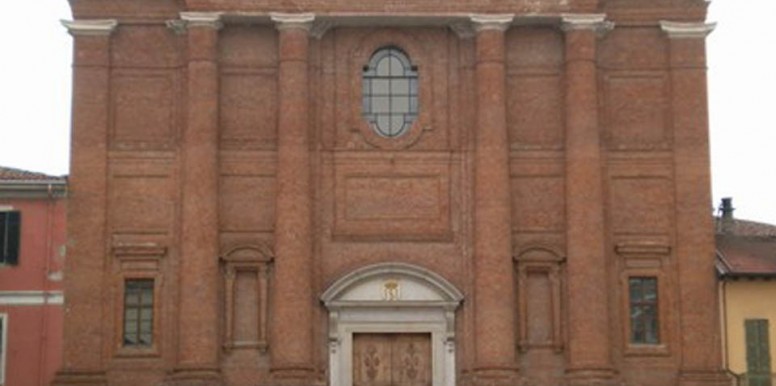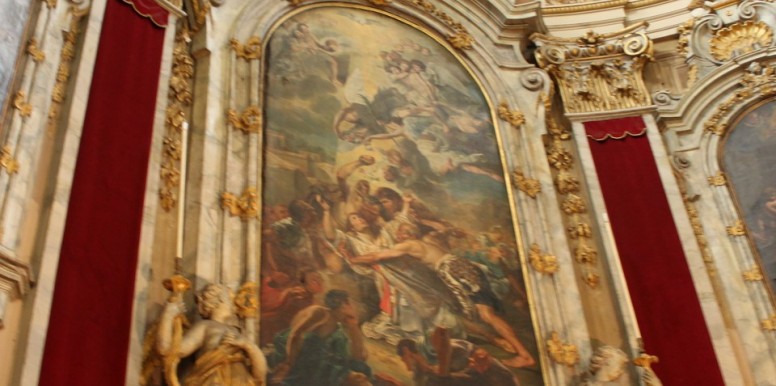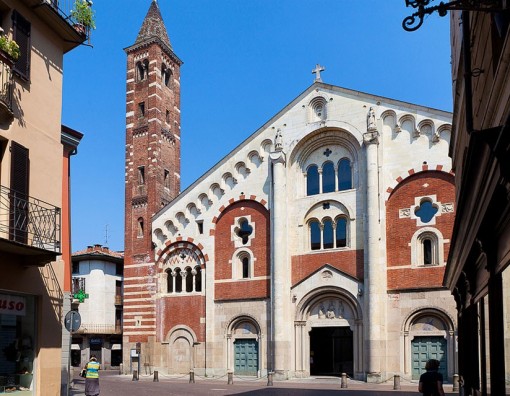Chiesa di Santo Stefano
The Church of Santo Stefano (originally SS. Stefano e Martino) is connected to the events of the Order of the Servants of Mary. The Servites, in 1728, were forced to abandon their primitive convent of S. Stefano in Borgoglio for the construction of the Citadel. The construction of a new church began slowly and it was consecrated in 1773. In September 1802, the convent was suppressed: for a short time, it was used as a military hospital then warehouse for the army, and returned to the Servites in 1817. In the mid-19th century, the parish passed to the secular clergy. A few years later, its scope was extended to the neighbourhood of the Citadel for the care of the souls of all the inhabitants of the fortress. The brick façade in late Baroque was not completed. The incompleteness is visible in the absence of the crowning tympanum. At the centre of the facade of the church in Alessandria opens a single and wide portal preceded by a staircase and surmounted by a curved tympanum. The two rectangular niches placed between the round columns also terminate with an analagous tympanum and were intended to contain two statues of saints. Between the round columns and the flat pilasters leaning against the side ends of the façade two rectangular windows give light to the interior of the church. A third window, in Baroque style for the mixed curvilinear profile, is situated in correspondence of the portal. Entering the church, the visitor is struck by the majestic Baroque style of the temple with rectangular layout and four lateral chapels. The rich decorations of the vaults date to 1898. In the first chapel to the right is a large canvas with “San Martino on horseback” in the act of cutting his cloak to offer it to a poor man, half naked. The canvas painted in 1852 by the painter Francesco Mensi from Alessandria, takes us back to a typical atmosphere of Italian romantic painting characterised by soft chiaroscuro, by the presence of a quiet landscape which is lost in the distance, but above all by the velvet-like and calming colours. A style of painting that is capable of slowly transmitting a distinct religious “feeling”. The Baroque wealth of the interior is contrasted in the right part close to the entrance by a niche that, like a poor chapel, contains a fresco painting in the background, detached and reproduced on canvas with the effigy of a “Madonna enthroned with Blessing Child”. The work is also known as “Madonna of Childbirth” or more commonly as “Blessed Virgin of San Baudolino”. Another work that can probably be placed in a cultural moment close to the end of the 15th century is the large wooden “Crucifix” situated on the left of the entrance next to the altar. Despite the showy and subsequent plastering and repainting which have surely altered in part the incisive nature of the original characters, it is possible to gather some stylistic aspects that unequivocally bring us to the late 15th century. The formal composition, the anatomical structure, the length of the arm and fingers of the hands and feet refer to other wooden sculptures in Piedmont. The most interesting aspect is surely to be found in the realistic expressiveness of the painful face rendered with an open mouth that seems to scream pain and suffering.
Information and contacts
piazza Santo Stefano - 15121 Alessandria (AL)
Telephone: +39 0131 253.638
E-mail: beniculturali@diocesialessandria.it
Link
http://diocesialessandria.it/diocesi/parrocchie/santo-stefano/
https://www.cittaecattedrali.it/it/bces/182-santo-stefano-alessandria






